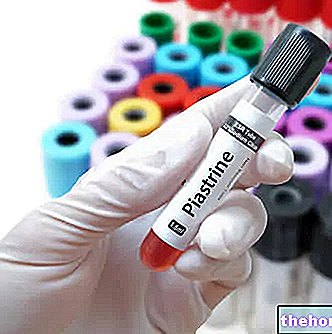Generality
PLT is a laboratory index that expresses the number of platelets per blood volume. In an adult, in good health, this number is between 150,000 and 450,000 units per microliter of blood.
Low PLT values indicate thrombocytopenia, while high blood concentrations of platelets indicate thrombocytosis (or platelet disease).

What's this
Platelets (or thrombocytes) are small blood cells. Their function is essential for the normal coagulation process.
More specifically, when blood vessel or tissue damage occurs and bleeding begins, platelets intervene in three ways:
- They adhere to the injured area;
- They aggregate together, forming a sort of stable plug that remains in place, until the damage is resolved;
- They release chemical factors that further stimulate the aggregation of other platelets.
Platelets arise from very large bone marrow cells (called megakaryocytes) and are released into the bloodstream.
Platelets survive in the circulation for about 8-10 days and the bone marrow must continuously produce new elements to replace those degraded, consumed and / or lost during bleeding.
Platelet count is the test that determines the number of platelets in the patient's bloodstream.









.jpg)


















